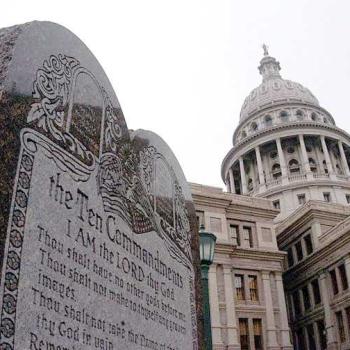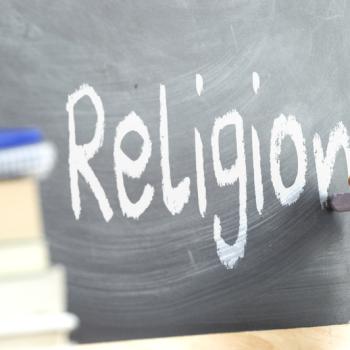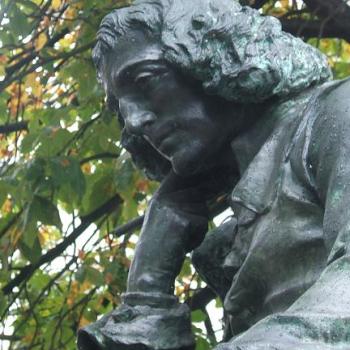Yes, there were Jews in colonial America. It wasn’t just Puritans and Quakers.
The history of Judaism in North America began in 1654, when 23 Sephardic Jews arrived in the Dutch colony of New Amsterdam, or today’s New York City. Like the Puritans, they were refugees from religious persecution.
About Sephardic Jews
The Sephardi or Sepharadim are Jews of Spanish and Portuguese descent. Historians believe the first Jewish communities on the Iberian Peninsula date to the time after the destruction of the Second Temple in Jerusalem, 70 CE. Through the centuries that followed the Jews of Iberia developed a rich Hispanic Jewish culture and a unique liturgical tradition.
One of the most prominent rabbis of Jewish history was Sephardi, born in Córdoba. He was Moses ben Maimon (1138–1204), known also as Maimonides. His writings on Jewish law and ethics are still revered.
Through the centuries, however, violence against Jews in Spain and Portugal became more common. It reached a peak when a high-ranking Catholic priest named Ferrand Martinez went on a crusade to stir up hatred against Jews. Violence, including the destruction of synagogues, escalated. In 1391, several thousand Jews in Seville were massacred by rioting mobs.
Many Jews of Iberia became conversos, or converts to Christianity, to escape violence. In the 15th century the Spanish monarchs Isabella and Ferdinand received permission from the Pope to begin an Inquisition, primarily against conversos suspected of secretly practicing Judaism. “Spanish Inquisition” to this day is a byword for cruelty. Jews were expelled from Spain in 1492 and from Portugal in 1497.
The Sephardi Diaspora
In the 16th and 17th centuries, the Sephardi dispersed to Turkey, North Africa, and many parts of Europe. Many settled in Holland, one of the more tolerant countries of the time. From there they migrated to Brazil, Suriname, Jamaica, and Curaçao, often under falsified identities to hide connections to Judaism. They had hoped to move far from the Inquisition to openly live as Jews again.
Unfortunately, the Inquisition came to the Spanish and Portuguese territories in South America. The Sepharadim had to keep any practice of Judaism hidden.
In 1654, a Dutch colony in what is now Brazil was conquered by Portuguese. Fearing the Inquisition, 23 Sephardic Jews sailed from Brazil to New Amsterdam. This was only 34 years after the Puritans had landed at Plymouth Rock, and about the same time that the first Quaker missionaries arrived in the New World.
The colonial governor of New Amsterdam, Peter Stuyvesant, attempted to expel the Sephardi, but the Dutch West India Company denied the request. The 23 Sephardi established what is now the oldest Jewish congregation in the United States, Congregation Shearith Israel.
Jewish Life in Colonial America

As more Jews arrived from Europe, the Caribbean, and South America, Sephardi communities were established in Charleston, Savannah, Philadelphia, and Newport, Rhode Island. It wasn’t easy for them. Christians in their communities often were suspicious of them. But they did not have to pretend to not be Jewish. Many opened trading posts and prospered. During the British colonial period they were able to gain citizenship.
Sephardi in Newport built what is now the oldest synagogue building in the United States, the Touro Synagogue, dedicated in 1763, Today Touro Synagogue is home to the Congregation Jeshuat Israel and a national historic site.
A Sephardic Jew, Francis Salvador, was elected to the Provincial Congress of South Carolina in 1774 and 1775. He became the first Jew to win an election in America. In 1776 he joined the militia fighting for independence in the Revolutionary War, and he was killed in a battle with Loyalists. Thus Francis Salvador became the first Jewish American to die for his country.
It’s estimated that on the eve of the Revolutionary War, between 2,000 and 3,000 Sephardic Jews lived in the English colonies, out of a population of roughly 3 million. About 100 are known to have fought in the Revolution, on both sides.
George Washington’s Letter
In 1790, President George Washington visited Newport, Rhode Island. Rhode Island had just ratified the Constitution, the last of the original 13 states to do so. Moses Seixas, a warden of the local Jewish congregation, presented Washington with a letter on behalf of the congregation. He wrote,
Deprived as we heretofore have been of the invaluable rights of free Citizens, we now with a deep sense of gratitude to the Almighty disposer of all events behold a Government, erected by the Majesty of the People — a Government, which to bigotry gives no sanction, to persecution no assistance — but generously affording to All liberty of conscience, and immunities of Citizenship: deeming every one, of whatever Nation, tongue, or language equal parts of the great governmental Machine.
May the children of the Stock of Abraham, who dwell in this land, continue to merit and enjoy the good will of the other Inhabitants; while every one shall sit in safety under his own vine and figtree, and there shall be none to make him afraid. May the father of all mercies scatter light and not darkness in our paths, and make us all in our several vocations useful here, and in his own due time and way everlastingly happy.
Afterword
In the 19th century Ashkenazi Jews migrated to the United States in growing numbers. The Ashkenazi are a people and culture of central and eastern Europe, and today Ashkenazi culture is Jewish culture to most Americans. The Sephardi are much less well known. But there are Sephardic communities established during the colonial period that still thrive in the U.S.
Emma Lazarus (1849–1887) was a writer, poet, and activist whose Sephardic Jewish family had lived in New York City since colonial times. She is remembered today primarily for her poem “The New Colossus,” composed in 1883. The last few lines are inscribed on the base of the Statue of Liberty.
Give me your tired, your poor,
Your huddled masses yearning to breathe free,
The wretched refuse of your teeming shore.
Send these, the homeless, tempest-tost to me,
I lift my lamp beside the golden door!












